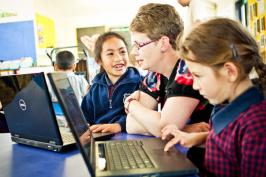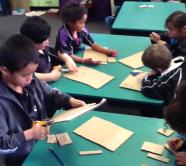Cultural capability in technology
We are preparing to close this site soon as this content has now moved to Tāhūrangi.
Tāhūrangi is the new online curriculum hub for Te Tāhuhu o te Mātauranga | Ministry of Education.
 What is cultural capability?
What is cultural capability?

Cultural capability is about understanding, valuing, and expanding different world views, perspectives, experiences, and measures of success.
The New Zealand Curriculum is underpinned by its commitment to Te Tiriti o Waitangi. This requires action based on understanding that the education system has underperformed for Māori learners and their whānau over an extended period. Cultural capability is critical.
A focus on cultural capability requires teachers and kaiako to recognise diversity of identities – including culture, gender, sexuality, and ability – and to take action to amplify the views of those and their communities who have been marginalised.
Culturally capable teachers and kaiako locate marginalised knowledge and connect with and legitimise this knowledge in the curriculum.
Culturally capable teachers and kaiako are aware of practices that perpetuate discrimination, racism, and inequity. They can analyse and adjust practices to communicate and teach in ways that develop critical consciousness and sustain and value cultural identity.
From: Regionally-allocated professional learning and development priorities - 2020.
 Technology and cultural capability
Technology and cultural capability

Technology education is about intervention by design. Learning and designing outcomes in authentic contexts provides many rich opportunities for students to develop their own unique set of capabilities.
The five technological areas provide new and different environments for contextualised learning. For example, if a context for learning is located in a Māori world view, students will learn technology from that perspective.
Technological practice requires students to use their design processes and to critically analyse existing outcomes so that they can create innovative solutions. This process requires students to be empathetic to the needs of the end-user, and to take on perspectives that are different to their own. The outcomes students design and develop need to be fit for purpose and meet end-user needs. Students can develop culturally inclusive and diverse capabilities as they develop empathy and perspective-taking.
Te reo Māori technology terms
Paekupu is a website that provides words for Te Mātauranga o Aotearoa. Put in English or Māori terms related to the curriculum, and you will get the appropriate te reo Māori or English term.
A wordlist for hangarau/technology is also available on the site. To see a set list of words in English translated to te reo Māori, go to Hangarau.
Steve Thornton from Trident High School worked with Te Taura Whiri i te reo Māori to translate common technology terms into te reo Māori.
Use these PDFs below for different contexts for technology with the appropriate words.
Māori Glossary - Food Technology (PDF, 50 KB)
Māori Glossary - Textiles (PDF, 49 KB)
Māori Glossary - Tools (PDF, 52 KB)
Māori Glossary - Tools (2) (PDF, 68 KB)
Technology in the School Journal and Connected
Find these articles on technology with discussions starters and other resources:
- “The Long Pause”, Connected, Level 3
- “Tupaia: Master Navigator”, School Journal, Level 3
- “Listening to the Land”, Connected, Level 3
- “Whai (string games)”, Ready to Read, Level 1
- “South Pacfic Beats”, Connected, Level 3, November 2018
Teaching and learning examples in the classroom
Explore these examples of teaching snapshots and student showcases.
Years 1–6
- Designing and developing digital outcomes for a marae visit
- Exploring food packaging
- Hīnaki – creating eel traps
Years 7–10
- Astronomy and e-textiles
- Technology and te ao Māori: Using taniko to introduce design
- Digital technologies curriculum content and designing games
- Collaboration between Ngāti Rangi Trust and Ruapehu College in digital technologies
